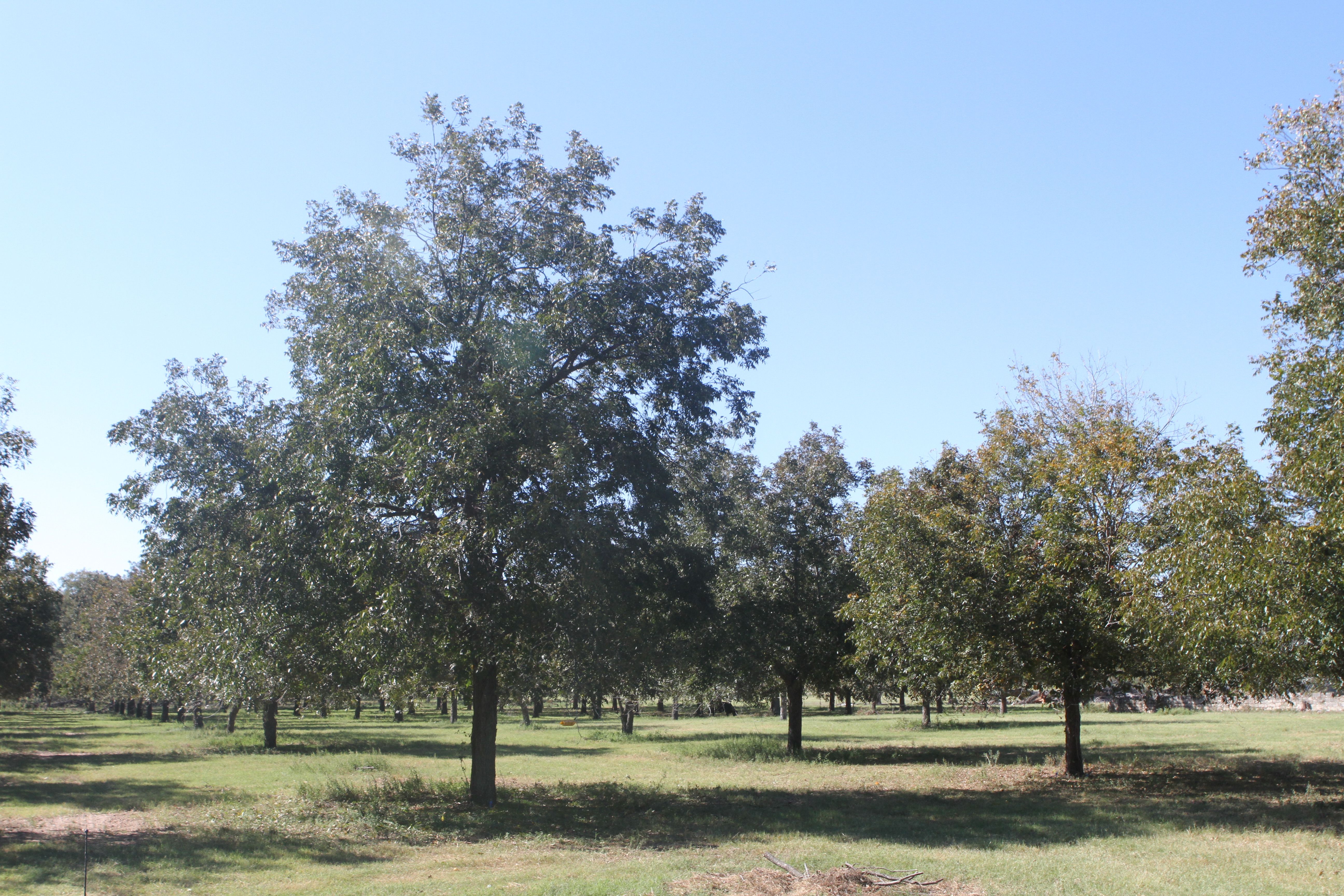By Justin Walker
Communications Specialist
Conditions have been good for pecan growers this year, and while the crop is still in the middle of growing season, a Texas A&M AgriLife Extension Service expert believes it will be a big year.
Monte Nesbitt, AgriLife Extension horticulturist, said the Texas pecan crop should be one of the largest in several years, even as the growing season—typically April to August—is ongoing.
“Texas has the capability to produce in the range of 70 million pounds,” he said in an interview with the Texas Farm Bureau Radio Network. “We have not done that in some time.”
The last time Texas hit the 70-million-pound mark was in 2010. The Lone Star State produced 60 million pounds in 2009 and 2014 but ranged 28 million to 39 million pounds in the years between.
“We have had a couple years previously with spotty production,” he said. “We have a more consistent crop this year.”
Nesbitt said the larger crop does come with its own set of challenges. Pest control, irrigation and soil monitoring is an extremely important aspect of growing pecans. With a larger crop, more work is needed to do the job correctly.
There’s also a lot more to managing pecan crops than most people expect, Nesbitt said.
“You can’t just drive by at 35 miles per hour and look and see pecans and believe everything is okay,” he said.
Nesbitt recommends a more systematic approach to caring for the crop. He said growers should be checking for a good terminal with cluster percentage—terminal branch tips with clusters of nuts on them.
If a grower has 80 percent or more terminals with clusters, they are looking at an overloaded crop situation. This will put more stress on the tree as it tries to fill the nuts properly. Wind breakage is also high in these situations.
Trees with higher terminal with cluster percentages usually perform poorly the following year, producing less well-filled, less well-developed pecans. Nesbitt said trees should be thinned down to a 55-60 percent level.
“That’s a more tolerable, less stressful level for nut production on the tree,” he said.
The pecan nut casebearer has had some impact on the crop this year, Nesbitt said. As of May, pecan growers were still dealing with the second generation of the pest. Nesbitt said he had noticed some trees with half or more of the pecan crop completely taken off.
“That was an unsprayed, unmanaged situation, and that’s pretty normal for what can happen,” he said.
Along with the pecan nut casebearer, Nesbitt warned growers to be on the lookout for hickory shuckworms, stink bugs, pecan weevils, aphids and scorch mites.
“These are all things that are still ahead of us for the remainder of the growing season,” he said.
Nesbitt noted that a crop this size could hold significant value in terms of revenue for the state.

